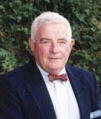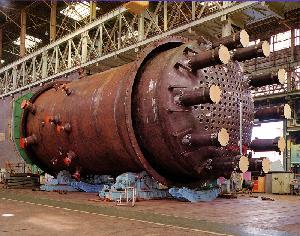The Great Nuclear Fizzle at Babcock & Wilcox
Case Study In Manufacturing Strategy
Nuclear Pressure Vessel
These vessels are very large and complex. They require thousands of hours of skilled, certified welding.
 In the late 1960's, Babcock and Wilcox already had more than 100 years experience with steam
boilers for marine propulsion and power generation. When the company entered the nuclear power
business, everything seemed to go wrong. The aftermath brought delivery delays, strikes,
lawsuits, red ink and a bizarre suicide. B&W even managed to create new competitors in a market
niche they had previously owned outright.
In the late 1960's, Babcock and Wilcox already had more than 100 years experience with steam
boilers for marine propulsion and power generation. When the company entered the nuclear power
business, everything seemed to go wrong. The aftermath brought delivery delays, strikes,
lawsuits, red ink and a bizarre suicide. B&W even managed to create new competitors in a market
niche they had previously owned outright.
The conventional analysis of this classic case study brings forth a long laundry list of management errors, mistakes and miscalculations. Yet, this seems improbable for such an experienced and competent organization. How could they make so many mistakes in so many different areas?
Wickham Skinner first used this example in his 1978 book, "Manufacturing in the Corporate Strategy". He traced B&W's troubles to a single root cause: management had failed to identify the "Key Manufacturing Task". Everything else emanated from this simple omission.
This case study is an excellent way to introduce Manufacturing Strategy to your management team or classroom. It comes with notes on the most effective way to conduct the discussion.

Dr. Skinner, a graduate of Yale, was an emeritus professor at Harvard University, where he taught and researched in the field of industrial management. In 1974 he was elected the James E. Robison Professor and from 1974 to 1977 was Associate Dean.
■ ■ ■ ■ ■ ■ ■



